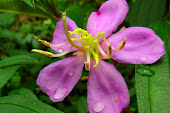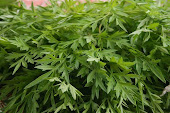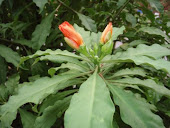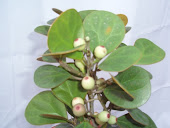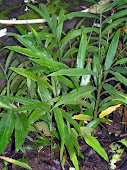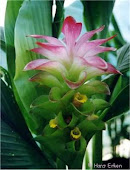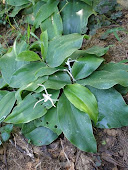By Mayo Clinic staff
Have you ever wished you could simply will your symptoms to disappear? With biofeedback you may be able to do just that by harnessing the power of your mind to help improve your health.
Biofeedback defined
- Brain activity
- Blood pressure
- Muscle tension
- Heart rate
- Skin temperature
- Sweat gland activity
- Asthma
- Headaches
- Hot flashes
- Raynaud's disease
- Irritable bowel syndrome
- Nausea and vomiting associated with chemotherapy
- Irregular heartbeats (cardiac arrhythmias)
- Chronic low back pain
- Chronic constipation
- High blood pressure
- Incontinence
- Epilepsy
Biofeedback may appeal to you for several reasons:
- It may reduce, or even eliminate, your need for medication.
- It has the potential to help conditions that have not responded to medication.
- It helps put you in charge of your own healing by providing measurable feedback, which allows you to monitor your progress and learning.
- It may decrease your medical costs.
Risks of biofeedback
What you can expect
Types of biofeedback
SA00083
Jan. 25, 2008
Part Three of Three: RAMADAN HERBS
By Karima Burns
As Ramadan approaches, we inevitably think about all of the special meals that we will eat during this holy month. After a day of fasting and worship, the Muslim or Muslimah’s reward is not only the sense of peace that he or she has gained, but also the special iftar that waits.
Hibiscus

Dates
 The reason that they are so beneficial is that their natural sugar travels quickly to the liver, and is converted more quickly than any other nutrient into energy that the fasting body soaks up like a sponge. This is the healthiest way of breaking the fast as it eases the body into digesting. Dates contain protein, calcium, phosphorus, iron, potassium, vitamin A, and natural sodium. They also contain a high amount of dietary fiber, which makes them a good digestive aid. Dates are also said to protect the stomach and the intestines from parasites and bacterial infections, so they are an especially good beginning to a meal when traveling or eating at a restaurant.
The reason that they are so beneficial is that their natural sugar travels quickly to the liver, and is converted more quickly than any other nutrient into energy that the fasting body soaks up like a sponge. This is the healthiest way of breaking the fast as it eases the body into digesting. Dates contain protein, calcium, phosphorus, iron, potassium, vitamin A, and natural sodium. They also contain a high amount of dietary fiber, which makes them a good digestive aid. Dates are also said to protect the stomach and the intestines from parasites and bacterial infections, so they are an especially good beginning to a meal when traveling or eating at a restaurant. Perfume is a food for the soul and the spirit, much like dates and hibiscus are foods for the body. During Ramadan, Muslims need many foods to keep them strong in their religious duties. In one of the best known Hadith of the Prophet Muhammad (SAW), he was quoted as saying, "There are three things in your world that are made to attract my affection: women, perfume, and then my ultimate fondness is securely fixed on prayers."
Perfume is a food for the soul and the spirit, much like dates and hibiscus are foods for the body. During Ramadan, Muslims need many foods to keep them strong in their religious duties. In one of the best known Hadith of the Prophet Muhammad (SAW), he was quoted as saying, "There are three things in your world that are made to attract my affection: women, perfume, and then my ultimate fondness is securely fixed on prayers." require a mouthful of water and often involve delicious tasting toothpaste. Miswak, on the other hand, is simply soaked until the brushing end is soft, and then gently stroked over the teeth. Imam Al-Bukhari narrated that Abdullah bin Omar brushed his teeth with a miswak morning and evening while fasting.
require a mouthful of water and often involve delicious tasting toothpaste. Miswak, on the other hand, is simply soaked until the brushing end is soft, and then gently stroked over the teeth. Imam Al-Bukhari narrated that Abdullah bin Omar brushed his teeth with a miswak morning and evening while fasting........................................................................................
prepared by, Nur Afifah Shuhardi
Botanical name: Piper Betle
a.k.a Betel Pepper
Piper sermentosum syn. Chavia sermentosum
F. Piperaceae

Description
Ingredients
- Protein (3.1%)
- Fat (0.8%)
- Minerals (2.3%)
- Fiber (2.3 %)
- Carbohydrates (6.1%)
- Calcium
- Riboflavin
- Carotene
- Niacin
- Thiamine
- Vitamin
- Sugar
- Tannins
- Diastases
- Also contains essential oil
Benefits
- The never-ending list of health properties of betel leaves is about as long and intriguing as the River Ganges. In Ayurvedic medicine (that holistic system of healing that originated in India some 3,000 to 5,000 years ago) the leaves are said to be an aphrodisiac (of course they are) and a breath freshener, which clearly helps in the amorous department
- Beyond the bedroom, betel leaf has been used since ancient times as an aromatic stimulant and anti-flatulent.
- In India, the betel leaf is used as a suppository to cast out worms.
- In Indonesia it is said to rid a warm body of Candida, blemishes and mouth ulcers and is praised for its digestive powers.
- Betel leaf juice is credited with diuretic properties. Its juice, mixed with dilute milk and sweetened slightly, helps in easing urination.
- Betel leaves are beneficial in the treatment of nervous pains, nervous exhaustion and debility. The juice of a few betel leaves, with a teaspoon of honey, will serve as a good tonic. A teaspoon of this can be taken twice a day.
- The betel leaf has analgesic and cooling properties. It can be applied with beneficial results over the painful area to relieve intense headache.
- Consumption of betel leaves instantly relieves Constipation.
- Applied locally, betel leaves are beneficial in the treatment of inflammation such as arthritis.
- Betel leaves can be used to heal wounds. The juice of a few leaves should be extracted and applied on the wound. Then a betel leaf should be wrapped over and bandaged. The wound will heal up with a single application within 2 days.
- The herb is also an effective remedy for boils. A leaf is gently warmed till it gets softened, and is then coated with a layer of castor oil. The oiled leaf is spread over the inflamed part. This leaf has to be replaced, every few hours. After a few applications, the boil will rupture draining all the purulent matter. The application can be made at night and removed in the morning.
- A hot poultice of the leaves or their juice mixed with some bland oil such as refined coconut oil can be applied to the loins with beneficial results in lumbago.
- Betel leaves are beneficial in pulmonary affection in childhood and old age. The leaves, soaked in mustered oil and warmed, may be applied to the chest to relieve cough and difficulty in breathing.
Precautions
References:
http://www.instah.com/herbs/health-benefits-of-betel-leaf/
http://herbs.ygoy.com/health-benefits-of-betel-leaves/
http://www.herbsarespecial.com.au/free-herb-information/betel-leaf.html
http://www.nzhealth.net.nz/herbs/coriander.shtml
http://www.tradewindsfruit.com/betel_leaf.htm
http://en.wikipedia.org/wiki/Betel
Original Articles:
http://www.nlm.nih.gov/medlineplus/acupuncture.html
http://altmedicine.about.com/cs/treatmentsad/a/acupuncture.html
Research has shown that acupuncture reduces nausea and vomiting after surgery and chemotherapy. It can also relieve pain. Researchers don't fully understand how acupuncture works. It might aid the activity of your body's pain-killing chemicals. It also might affect how you release chemicals that regulate blood pressure and flow.
Acupuncture is a component of traditional Chinese medicine that originated in China over 5,000 years ago. It is based on the belief that living beings have a vital energy, called "qi", that circulates through twelve invisible energy lines known as meridians on the body. Each meridian is associated with a different organ system. An imbalance in the flow of qi throughout a meridian is how disease begins. American practices of acupuncture use medical traditions from China, Japan, Korea and other countries. In the United States, the best-known type involves putting hair-thin, metallic needles in your skin.
It is based on the belief that living beings have a vital energy, called "qi", that circulates through twelve invisible energy lines known as meridians on the body. Each meridian is associated with a different organ system. An imbalance in the flow of qi throughout a meridian is how disease begins. American practices of acupuncture use medical traditions from China, Japan, Korea and other countries. In the United States, the best-known type involves putting hair-thin, metallic needles in your skin.
In 1997, acupuncture needles were reclassified from "experimental" to "medical device" by the U.S. Food and Drug Administration (FDA). The National Institutes of Health released a consensus statment in the same year endorsing acupuncture for the treatment of a variety of conditions such as post-operative pain, tennis elbow, and carpal tunnel syndrome.
Acupuncture is one of the best known of the alternative therapies. The FDA estimates that people in the United States spend more than $500 million annually on acupuncture treatments. Many people have insurance coverage for acupuncture.
How Acupuncture Works
- acupuncture stimulates the release of pain-relieving endorphins
- acupuncture influences the release of neurotransmitters, substances that transmit nerve impulses to the brain
- acupuncture influences the autonomic nervous system
- acupuncture stimulates circulation
- acupuncture influences the electrical currents of the body
Conditions Treated By Acupuncture
- migraines and tension headaches
- sinusitis
- common cold
- addictions, quit smoking
- trigeminal neuralgia
- Meniere's disease
- tennis elbow
- sciatica
- arthritis
- menstrual cramps
- fibromyalgia
- low back pain
- asthma
- weight loss
- infertility
What a Typical Acupuncture Treatment is Like
After the interview, the acupuncturist gives a diagnosis and begins treatment. Typically, the acupuncturist will use 6-12 needles during the treatment. The number of needles used does not correspond with the intensity of the treatment, rather it is the precise placement of the needles that is important.
Upon insertion, the client may feel a slight sting or prick. Once the needle is inserted, there should be no pain. You should feel comfortable during the treatment. If you experience pain, numbness, or discomfort, notify the acupuncturist immediately.
Treatment length varies from seconds to longer than one hour. The typical length is about 20 to 30 minutes. The acupuncturist may use the following techniques during the treatment:
- moxibustion - heating of acupuncture needles with dried herb sticks to activate and warm the acupuncture point. Also known as "moxa".
- cupping - the application of glass cups to create a suction on the skin. This is to relieve stagnation of qi and blood, e.g. in sports injury.
- herbal medicine - Chinese herbs may be given in the form of teas, pills, and capsules to supplement acupuncture treatment.
- electrostimulation - provides electrical stimulation to two to four acupuncture needles. Can be used for pain relief and muscle pain.
- laser acupuncture - non-needle stimulation of needles
Uses for Grape Seed Extract
Since ancient Greece, various parts of the grape have been used for medicinal purposes. Grape seed extract is purported to help treat the following health problems:
- high blood pressure
- alzheimer's disease
- constipation
- macular degeneration
- artherosclerosis
- poor circulation
- complications due to diabetes
- gastrointestinal disorder
Grape Seed Extract for Cancer Prevention
Proponents claim that grape seed extract can help protect against cancer. In laboratory studies, scientists have demonstrated that grape seed can help fight free radicals (chemical by-products known to cause DNA damage associated with cancer). However, it is still unclear whether grape seed can lower cancer risk in humans.
Benefits of Grape Seed Extract
Although few trials have examined grape seed extract's effects on specific diseases or conditions, preliminary research suggests that grape seed shows promise in treatment and/or prevention of the following:
1) Diabetes-Related Complications
In a 2009 study of 32 type 2 diabetes patients at high cardiovascular risk, participants took 600 mg of grape seed extract or a placebo every day for four weeks. Study results showed that grape seed extract significantly improved markers of inflammation and glycemia. The study's authors suggest that grape seed extract may have a therapeutic role in decreasing cardiovascular risk.
2) High Blood Pressure
In a 2009 study of subjects with metabolic syndrome, researchers found that four weeks of treatment with grape seed extract lowered both systolic and diastolic blood pressure.
Metabolic syndrome is marked by a cluster of health problems (including excess belly fat, high blood pressure, high cholesterol, insulin resistance, and inflammation) known to raise your risk of heart disease and type 2 diabetes.
Grape seed extract may help delay the development of Alzheimer's disease, according to an animal study published in 2009. In tests on mice, scientists discovered that grape seed extract eased inflammation and prevented the accumulation of substances known to form the brain plaques associated with Alzheimer's disease.
Is Grape Seed Extract Safe?
Grape seed extract is generally well-tolerated when taken by mouth. It has been used safely for up to 8 weeks in clinical trials.
If you're considering the use of grape seed extract in treatment or prevention of a condition or disease, make sure to consult your physician first.
Side Effects of Grape Seed Extract
Although grape seed is generally considered safe, it may cause adverse effects such as headache, dry or itchy scalp, dizziness, and nausea.
Reference:
http://altmedicine.about.com/od/completeazindex/a/grapeseed.htmby Norashikin
by Norashikin Mohamad Sapuan






